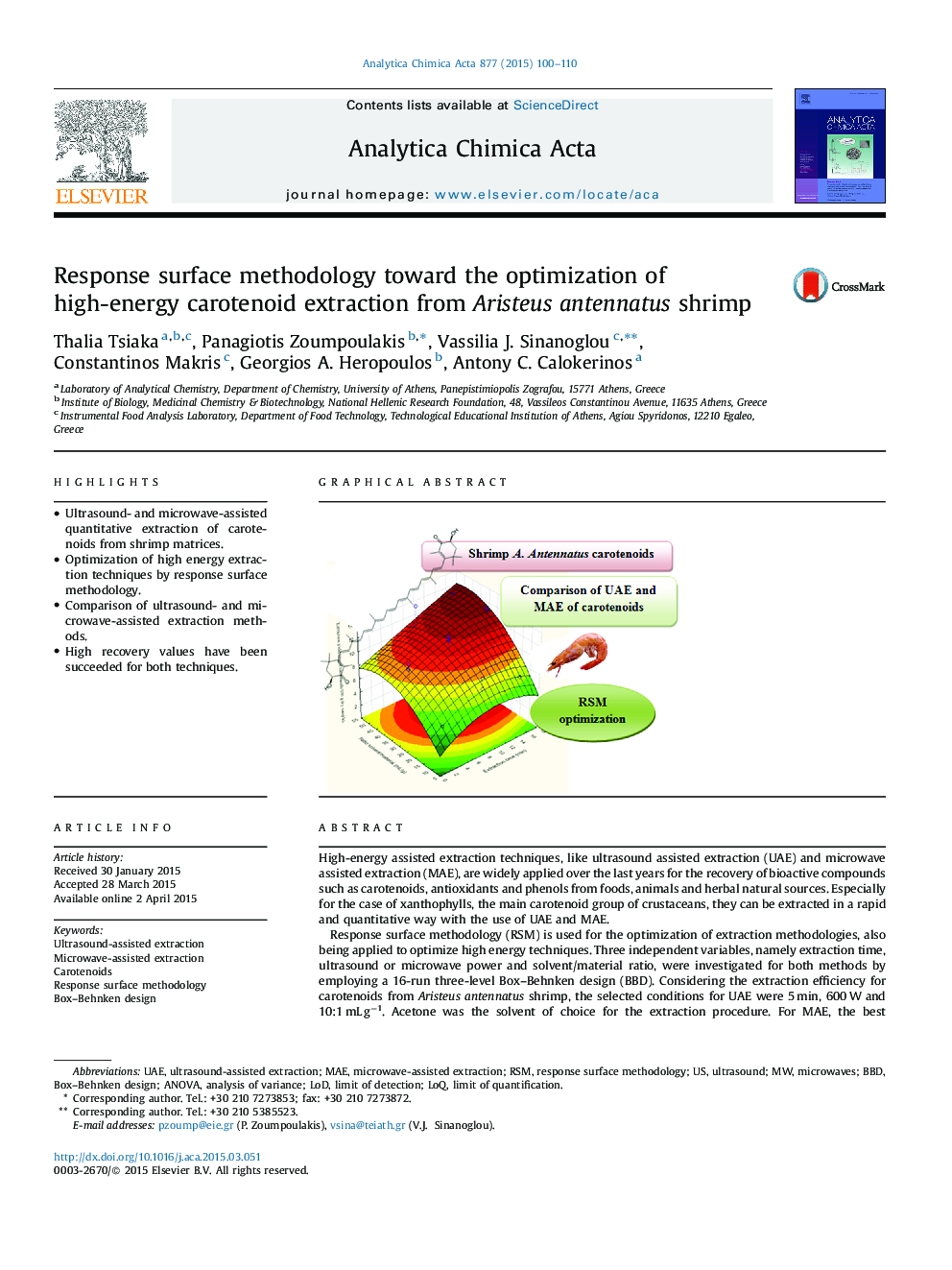| کد مقاله | کد نشریه | سال انتشار | مقاله انگلیسی | نسخه تمام متن |
|---|---|---|---|---|
| 1163449 | 1490955 | 2015 | 11 صفحه PDF | دانلود رایگان |

• Ultrasound- and microwave-assisted quantitative extraction of carotenoids from shrimp matrices.
• Optimization of high energy extraction techniques by response surface methodology.
• Comparison of ultrasound- and microwave-assisted extraction methods.
• High recovery values have been succeeded for both techniques.
High-energy assisted extraction techniques, like ultrasound assisted extraction (UAE) and microwave assisted extraction (MAE), are widely applied over the last years for the recovery of bioactive compounds such as carotenoids, antioxidants and phenols from foods, animals and herbal natural sources. Especially for the case of xanthophylls, the main carotenoid group of crustaceans, they can be extracted in a rapid and quantitative way with the use of UAE and MAE.Response surface methodology (RSM) is used for the optimization of extraction methodologies, also being applied to optimize high energy techniques. Three independent variables, namely extraction time, ultrasound or microwave power and solvent/material ratio, were investigated for both methods by employing a 16-run three-level Box–Behnken design (BBD). Considering the extraction efficiency for carotenoids from Aristeus antennatus shrimp, the selected conditions for UAE were 5 min, 600 W and 10:1 mL g−1. Acetone was the solvent of choice for the extraction procedure. For MAE, the best experimental values were 7 min, 30 W and 20:1 mL g−1 using n-hexane:acetone:ethanol 2:1:1 (v/v/v) as extraction solvent. The determination of total carotenoid yield was carried out using the spectophotometric calibration curve (A = 0.1646(±0.0061)C − 0.005(±0.022), R2 = 0.996, n = 3) of a standard mix solution of canthaxanthin, zeaxanthin and lutein at 452.1 nm. Under the selected conditions, the yield of total carotenoids for UAE was 23.4(±2.3) and 6.73(±0.56) mg of carotenoids per 100 g dry sample for the head and the body of shrimp, while for MAE was 23.92(±0.63) and 13.3(±1.1) mg of carotenoids per 100 g dry sample, respectively. The recovery of both methods was calculated between 60 and 105%. The results indicate that high-energy extraction techniques are faster, less laborious, more repeatable and reproducible methods than the conventional approaches for the quantitative recovery of sensitive bioactive compounds. Moreover, the recovery of a high-added value group of bioactive molecules from natural sources, such as carotenoids, can constitute a profitable and valuable commercial alternative, as these compounds can be used as dietary supplements, food color enhancers and additives in animal feeds, functional foods, preservatives, pharmaceuticals and cosmetics.
Figure optionsDownload as PowerPoint slide
Journal: Analytica Chimica Acta - Volume 877, 2 June 2015, Pages 100–110